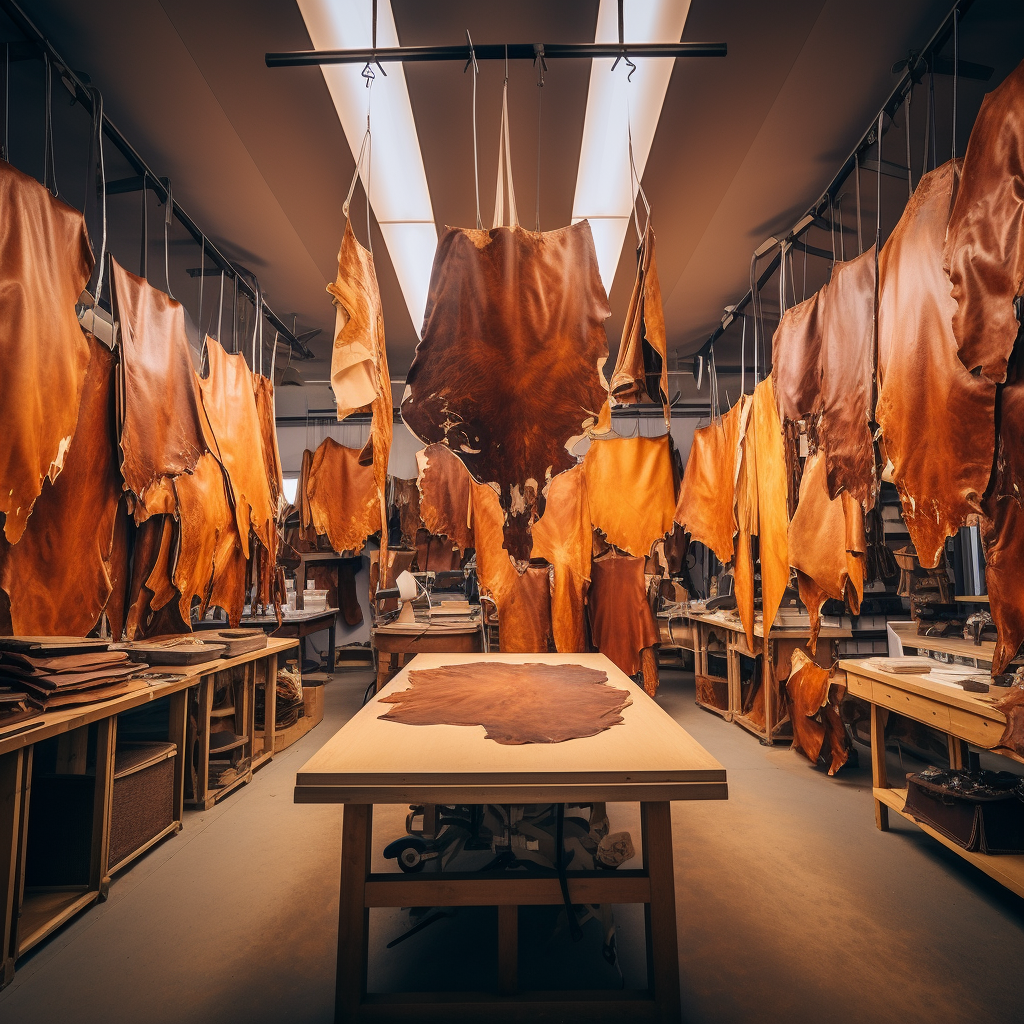The Ultimate Guide to Upholstery Leather: Choosing Quality, Style, and Durability

Introduction to Upholstery Leather
Upholstery leather, a key element in furniture and interior design, offers a perfect blend of elegance and durability. Choosing the right type of leather for upholstery can significantly impact the aesthetics and longevity of your furniture. In this comprehensive guide, we'll delve into the characteristics, types, tanning processes, and advantages of upholstery leather, helping you make informed decisions for your upholstery needs.
Characteristics of Upholstery Leather
Durability: Upholstery leather is renowned for its toughness and resistance to wear and tear. It withstands the test of time, making it a reliable choice for long-lasting furniture.
Flexibility: The natural flexibility of leather allows it to adapt to different shapes, providing a comfortable and snug fit for your furniture.
Texture and Color: From smooth and sleek to textured and distressed, upholstery leather comes in a variety of textures and colors. The choice depends on your design preferences and the overall aesthetic you want to achieve.

Why Upholstery Leather Needs to be Flexible:
The flexibility of upholstery leather is essential for several reasons:
- Conformity to Shapes: Upholstery leather needs to adapt to the contours of furniture, ensuring a snug and comfortable fit.
- Comfort: The natural flexibility of leather contributes to the overall comfort of furniture, providing a pleasant and inviting seating experience.
- Resistance to Cracking: Flexible leather is less prone to cracking or developing creases, enhancing its longevity and appearance.
- Ease of Use in Upholstery: The pliability of upholstery leather makes it easier for craftsmen to work with, allowing for smoother installation and achieving desired designs.

The flexibility of upholstery leather is a result of both its inherent structure and the tanning process it undergoes. Here's an explanation of how and why upholstery leather is so flexible:
- leather is derived from animal hides, which consist of collagen fibres. These fibres are naturally arranged in a three-dimensional matrix, creating a strong yet flexible structure.
- The collagen fibres have a unique criss-cross pattern, providing inherent elasticity. This natural flexibility allows leather to bend, stretch, and adapt to various shapes without losing its structural integrity.
- Many upholstery leathers are treated with oils and waxes during the finishing process. These additives help maintain the leather's moisture content and flexibility.
- The oils penetrate the collagen fibres, keeping them lubricated and preventing stiffness. This is especially important in maintaining the leather's softness and flexibility over time.
- In the manufacturing of upholstery leather, additional processes such as thinning and softening are applied.
- Thinning involves reducing the thickness of the leather, making it more pliable. Softening processes can include mechanical methods, heat treatments, or additional conditioning to enhance flexibility.
Types of Upholstery Leather
Full Grain Leather: Recognized for its natural look and durability, full grain leather retains the original texture and markings of the hide, making each piece unique.
Top Grain Leather: This type is obtained by splitting the top layer of the hide, resulting in a more uniform appearance. Top grain leather is known for its durability and resistance to wear.
Split Grain Leather: Created from the lower layers of the hide, split grain leather is more affordable and can be used in less demanding applications.
Bonded Leather: Comprising leftover leather scraps bonded together, bonded leather is a cost-effective option, although it may lack the durability of other types.
Exotic Leather: For those seeking a touch of luxury, exotic leather such as ostrich or alligator provides a unique and opulent choice.
Tanning Processes
Vegetable Tanning: A traditional method using plant-based tannins, vegetable tanning results in a natural and environmentally friendly leather with a distinct aroma.
Chrome Tanning: Widely used for its efficiency, chrome tanning involves the use of chromium salts to produce a soft and supple leather.
Semi-Aniline and Aniline Tanning: These processes create softer, more natural leathers by retaining the hide's original markings and characteristics.
Best Uses for Different Types of Leather
Residential Furniture: Full grain and top grain leathers are ideal for sofas and chairs, providing both durability and a luxurious appearance.
Commercial Spaces: In high-traffic areas, durable and easy-to-maintain leather options are preferred. Consider top grain leather for its balance of quality and affordability.
Automotive Upholstery: Leather chosen for car interiors should be resistant to wear, easy to clean, and visually appealing. Top grain leather is often a popular choice.
Fashion and Accessories: Exotic leathers add a touch of luxury to clothing and accessories, while more traditional options like full grain leather offer durability and style.
Caring for Upholstery Leather
Cleaning Tips: Regularly clean your leather upholstery with a damp cloth or a leather-specific cleaner. Avoid harsh chemicals that can damage the natural oils in the leather.
Avoiding Common Issues: Keep leather furniture away from direct sunlight to prevent fading, and address spills and stains promptly to prevent long-term damage.
Conclusion
In conclusion, upholstery leather is a versatile and timeless choice for enhancing the beauty and functionality of furniture. By understanding the characteristics, types, tanning processes, and advantages of upholstery leather, you can make informed decisions that align with your style and practical needs. Whether you're furnishing a home, office, or vehicle, the right choice of leather ensures a combination of elegance and durability that will withstand the test of time
